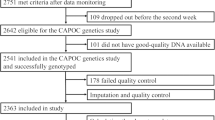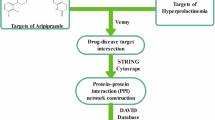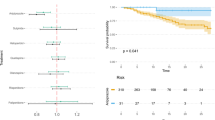Abstract
As antipsychotic administration often persists for a lifetime, antipsychotic-induced cardiotoxicity (AIC) becomes a significant and potentially life-threatening side effect. Owing to the lack of an appropriate human cardiomyocyte experimental model, current research on AIC is primarily based on clinical case reports. In this study, we generated human iPSC-derived cardiomyocytes (iPSC-CMs) and characterized the cardiotoxicity of 6 antipsychotics (clozapine, haloperidol, quetiapine, olanzapine, risperidone, and aripiprazole) used in clinical practice. Multielectrode array analysis revealed that all 6 antipsychotics, when used within their respective clinical plasma concentration (CPC) ranges, were likely to cause a significantly prolonged field potential duration (FPD) in iPSC-CMs. Moreover, administration of the third-generation antipsychotic aripiprazole (10 mg/kg, i.g.) led to marked QT interval prolongation in beagle dogs. We demonstrated that aripiprazole administration resulted in mitochondrial damage and oxidative stress, which accelerated protein degradation of human ether-à-go-go-related gene (hERG) channels, generating a rapid delayed rectifying potassium current (IKr) through the proteasome pathway, ultimately leading to FPD prolongation. Scavenging reactive oxygen species or suppressing the ubiquitin‒proteasome pathway (UPP) significantly restored hERG channel function and rescued the prolonged FPD phenotype in aripiprazole-treated iPSC-CMs. Our results suggest that caution should be taken when aripiprazole is prescribed to high-risk patients with preexisting comorbidities. Manipulation of excessive oxidative stress or suppression of the UPP may offer novel therapeutic strategies for mitigating aripiprazole-induced proarrhythmic risk.
This is a preview of subscription content, access via your institution
Access options
Subscribe to this journal
Receive 12 print issues and online access
$259.00 per year
only $21.58 per issue
Buy this article
- Purchase on SpringerLink
- Instant access to full article PDF
Prices may be subject to local taxes which are calculated during checkout








Similar content being viewed by others
References
Krogmann A, Peters L, von Hardenberg L, Bödeker K, Nöles VB, Correill CU. Keeping up with the therapeutic advances in schizophrenia: a review of novel and emerging pharmacological entities. CNS Spectr. 2019;24:41–68.
Gnanavel S, Hussain S. Audit of physical health monitoring in children and adolescents receiving antipsychotics in neurodevelopmental clinics in Northumberland. World J Psychiatr. 2018;8:27–32.
D’Errico S, La Russa R, Maiese A, Santurro A, Scopetti M, Romano S, et al. Atypical antipsychotics and oxidative cardiotoxicity: review of literature and future perspectives to prevent sudden cardiac death. J Geriatr Cardiol. 2021;18:663–85.
Salvo F, Pariente A, Shakir S, Robinson P, Arnaud M, Thomas SHL, et al. Sudden cardiac and sudden unexpected death related to antipsychotics: a meta-analysis of observational studies. Clin Pharmacol Ther. 2016;99:306–14.
Li XQ, Tang XR, Li LL. Antipsychotics cardiotoxicity: What’s known and what’s next. World J Psychiatr. 2021;11:736–53.
Savoji H, Mohammadi MH, Rafatian N, Toroghi MK, Wang EY, Zhao YM, et al. Cardiovascular disease models: a game changing paradigm in drug discovery and screening. Biomaterials. 2019;198:3–26.
Takahashi K, Tanabe K, Ohnuki M, Narita M, Ichisaka T, Tomoda K, et al. Induction of pluripotent stem cells from adult human fibroblasts by defined factors. Cell. 2007;131:861–72.
Yu J, Vodyanik MA, Smuga-Otto K, Antosiewicz-Bourget J, Frane JL, Tian S, et al. Induced pluripotent stem cell lines derived from human somatic cells. Science. 2007;318:1917–20.
Liang P, Lan F, Lee AS, Gong T, Sanchez-Freire V, Wang Y, et al. Drug screening using a library of human induced pluripotent stem cell-derived cardiomyocytes reveals disease-specific patterns of cardiotoxicity. Circulation. 2013;127:1677–91.
Navarrete EG, Liang P, Lan F, Sanchez-Freire V, Simmons C, Gong T, et al. Screening drug-induced arrhythmia [corrected] using human induced pluripotent stem cell-derived cardiomyocytes and low-impedance microelectrode arrays. Circulation. 2013;128:S3–13.
Shen J, Wang X, Zhou D, Li T, Tang L, Gong T, et al. Modelling cadmium-induced cardiotoxicity using human pluripotent stem cell-derived cardiomyocytes. J Cell Mol Med. 2018;22:4221–35.
Wang X, Pan Z, Wang J, Wang H, Fan H, Gong T, et al. Characterization of the molecular mechanisms underlying azithromycin-induced cardiotoxicity using human-induced pluripotent stem cell-derived cardiomyocytes. Clin Transl Med. 2021;11:e549.
Zhou J, Cui B, Wang X, Wang H, Zheng J, Guo F, et al. Overexpression of KCNJ2 enhances maturation of human-induced pluripotent stem cell-derived cardiomyocytes. Stem Cell Res Ther. 2023;14:92–10.
Lian X, Hsiao C, Wilson G, Zhu K, Hazeltine LB, Azarin SM, et al. Robust cardiomyocyte differentiation from human pluripotent stem cells via temporal modulation of canonical Wnt signaling. Proc Natl Acad Sci USA. 2012;109:E1848–57.
Wu H, Lee J, Vincent LG, Wang Q, Gu M, Lan F, et al. Epigenetic regulation of phosphodiesterases 2A and 3A underlies compromised β-adrenergic signaling in an iPSC model of dilated cardiomyopathy. Cell Stem Cell. 2015;17:89–100.
Streckfuss-Bömeke K, Tiburcy M, Fomin A, Luo X, Li W, Fischer C, et al. Severe DCM phenotype of patient harboring RBM20 mutation S635A can be modeled by patient-specific induced pluripotent stem cell-derived cardiomyocytes. J Mol Cell Cardiol. 2017;113:9–21.
Valente AJ, Maddalena LA, Robb EL, Moradi F, Stuart JA. A simple ImageJ macro tool for analyzing mitochondrial network morphology in mammalian cell culture. Acta Histochem. 2017;119:315–26.
Patteet L, Morrens M, Maudens KE, Niemegeers P, Sabbe B, Neels H. Therapeutic drug monitoring of common antipsychotics. Ther Drug Monit. 2012;34:629–51.
Cole LA, Dennis JH, Chase PB. Commentary: epigenetic regulation of phosphodiesterases 2A and 3A underlies compromised β-adrenergic signaling in an iPSC model of dilated cardiomyopatyh. Front Physiol. 2016;7:418–21.
Twig G, Elorza A, Molina AJA, Mohamed H, Wikstrom JD, Walzer G, et al. Fission and selective fusion govern mitochondrial segregation and elimination by autophagy. EMBO J. 2008;27:433–46.
Fermini B, Fossa AA. The impact of drug-induced QT interval prolongation on drug discovery and development. Nat Rev Drug Discov. 2003;2:439–47.
U.S. Food and Drug Administration.Industry guidance: S7A safety pharmacology studies for human pharmaceuticals. FDA. 2000.
Government of Canada, Health Canada. Guidance for industry: The non-clinical evaluation of the potential for delayed ventricular repolarization (QT interval prolongation) by human pharmaceuticals: ICH topic S7B. Health Products and Food Branch. 2005.
Wang N, Kang HS, Ahmmed G, Khan SA, Makarenko VV, Prabhakar NR, et al. Calpain activation by ROS mediates human ether-a-go-go-related gene protein degradation by intermittent hypoxia. Am J Physiol Cell Physiol. 2016;310:C329–36.
Taglialatela M, Castaldo P, Iossa S, Pannaccione A, Fresi A, Ficker E, et al. Regulation of the human ether-a-gogo related gene (HERG) K+ channels by reactive oxygen species. Proc Natl Acad Sci USA. 1997;94:11698–703.
Nanduri J, Bergson P, Wang N, Ficker E, Prabhakar NR. Hypoxia inhibits maturation and trafficking of hERG K+ channel protein: role of Hsp90 and ROS. Biochem Biophys Res Commun. 2009;388:212–16.
Creanza TM, Delre P, Ancona N, Lentini G, Saviano M, Mangiatordi GF. Structure-based prediction of hERG-related cardiotoxicity: a benchmark study. J Chem Inf Model. 2021;61:4758–70.
Vandenberg JI, Perry MD, Perrin MJ, Mann SA, Ke Y, Hill AP. hERG K+ channels: structure, function, and clinical significance. Physiol Rev. 2012;92:1393–478.
Cabassa LJ, Manrique Y, Meyreles Q, Capitelli L, Younge R, Dragatsi D, et al. Treated me … like I was family”: qualitative evaluation of a culturally-adapted health care manager intervention for Latinos with serious mental illness and at risk for cardiovascular disease. Transcult Psychiatry. 2019;56:1218–36.
Friis K, Aaby A, Lasgaard M, Pedersen MH, Osborne RH, Maindal HT. Low health literacy and mortality in individuals with cardiovascular disease, chronic obstructive pulmonary disease, diabetes, and mental illness: a 6-year population-based follow-up study. Int J Environ Res Public Health. 2020;17:9399.
Polcwiartek C, Kragholm K, Hansen SM, Atwater BD, Friedman DJ, Barcella CA, et al. Electrocardiogram characteristics and their association with psychotropic drugs among patients with schizophrenia. Schizophr Bull. 2020;46:354–62.
Antoniou CK, Dilaveris P, Manolakou P, Galanakos S, Magkas N, Gatzoulis K, et al. QT prolongation and malignant arrhythmia: How serious a problem? Eur Cardiol. 2017;12:112–20.
Adetiloye AO, Abdelmottaleb W, Ahmed MF, Victoria AM, Ozbay MB, Valencia Manrique JC, et al. Clozapine-induced myocarditis in a young man with refractory schizophrenia: case report of a rare adverse event and review of the literature. Am J Case Rep. 2022;23:e936306.
Tisdale JE. Drug-induced QT interval prolongation and torsades de pointes: Role of the pharmacist in risk assessment, prevention and management. Can Pharmacol J. 2016;149:139–52.
Meyer-Massetti C, Cheng CM, Sharpe BA, Meier CR, Guglielmo BJ. The FDA extended warning for intravenous haloperidol and torsades de pointes: how should institutions respond? J Hosp Med. 2010;5:E8–16.
Aronow WS, Shamliyan TA. Effects of atypical antipsychotic drugs on QT interval in patients with mental disorders. Ann Transl Med. 2018;6:147.
Beach SR, Celano CM, Sugrue AM, Adams C, Ackerman MJ, Noseworthy PA, et al. QT prolongation, torsades de pointes, and psychotropic medications: a 5-year update. Psychosomatics. 2018;59:105–22.
Arzuk E, Karakus F, Orhan H. Bioactivation of clozapine by mitochondria of the murine heart: possible cause of cardiotoxicity. Toxicology. 2021;447:152628.
McGill MR, Jaeschke H. Metabolism and disposition of acetaminophen: recent advances in relation to hepatotoxicity and diagnosis. Pharmacol Res. 2013;30:2174–87.
Elmorsy E, Al-Ghafari A, Aggour AM, Mosad SM, Khan R, Amer S. Effect of antipsychotics on mitochondrial bioenergetics of rat ovarian theca cells. Toxicol Lett. 2017;272:94–100.
Balijepalli S, Kenchappa RS, Boyd MR, Ravindranath V. Protein thiol oxidation by haloperidol results in inhibition of mitochondrial complex I in brain regions: comparison with atypical antipsychotics. Neurochem Int. 2001;38:425–35.
Beauchemin M, Geguchadze R, Guntur AR, Nevola K, Le PT, Barlow D, et al. Exploring mechanisms of increased cardiovascular disease risk with antipsychotic medications: risperidone alters the cardiac proteomic signature in mice. Pharmacol Res. 2020;152:104589.
Sanguinetti MC, Jiang C, Curran ME, Keating MT. A mechanistic link between an inherited and an acquired cardiac arrhythmia: HERG encodes the IKr potassium channel. Cell. 1995;81:299–307.
Arcangeli A, Bianchi L, Becchetti A, Faravelli L, Coronnello M, Mini E, et al. A novel inward-rectifying K+ current with a cell-cycle dependence governs the resting potential of mammalian neuroblastoma cells. J Physiol. 1995;489:455–71.
Curran ME, Splawski I, Timothy KW, Vincent GM, Green ED, Keating MT. A molecular basis for cardiac arrhythmia: HERG mutations cause long QT syndrome. Cell. 1995;80:795–803.
Preda A, Shapiro BB. A safety evaluation of aripiprazole in the treatment of schizophrenia. Expert Opin Drug Saf. 2020;19:1529–38.
Acknowledgements
We thank Xiao-li Hong and Chao Bi from the Core Facilities of Zhejiang University School of Medicine for their technical support. This work was supported by the Noncommunicable Chronic Diseases-National Science and Technology Major Project (2024ZD0521500, 2024ZD0521502) (PL); the “LingYan” Research and Development Project (2024C03155) (PL); and the National Natural Science Foundation of China (82370354) (PL), (82204348) (YHC), and (82400372) (XCW). PL would like to thank Tiffany Gong, Natalie Liang, and Michael Liang for their encouragement and consistent support.
Author information
Authors and Affiliations
Contributions
RK and PL designed and supervised the study. YHC, XCW, HKW, ZKY, and DDL performed the experiments and analyzed the data. YHC and PL wrote the manuscript.
Corresponding authors
Ethics declarations
Competing interests
The authors declare no competing interests.
Additional information
Publisher’s note Springer Nature remains neutral with regard to jurisdictional claims in published maps and institutional affiliations.
Supplementary information
Rights and permissions
Springer Nature or its licensor (e.g. a society or other partner) holds exclusive rights to this article under a publishing agreement with the author(s) or other rightsholder(s); author self-archiving of the accepted manuscript version of this article is solely governed by the terms of such publishing agreement and applicable law.
About this article
Cite this article
Cao, Yh., Wang, Xc., Wang, Hk. et al. ROS-induced degradation of hERG potassium channels contributes to aripiprazole-induced prolongation of the QTc interval. Acta Pharmacol Sin (2025). https://doi.org/10.1038/s41401-025-01648-x
Received:
Accepted:
Published:
DOI: https://doi.org/10.1038/s41401-025-01648-x



